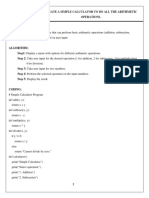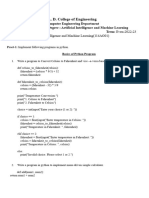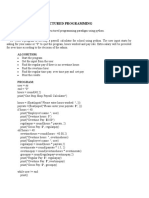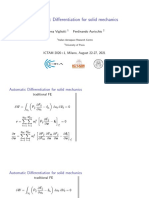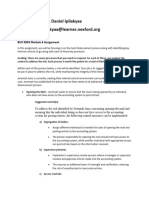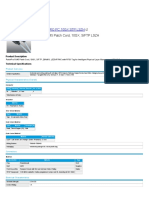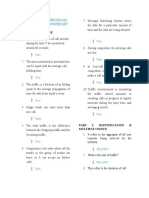0% found this document useful (0 votes)
101 views29 pagesPython Programming Basics
The document provides code snippets for 10 programming tasks:
1) Create a simple calculator program
2) Write a program using control flow (if statement)
3) Write a program using a for loop
4) Use lists as stacks and queues
5) Create a module for mathematical operations
6) Write a program to read/write files and create/delete directories
7) Write a program with exception handling
8) Write a program using classes
9) Connect to a MySQL database and create an address book
10) Write a program using string handling and regular expressions
Uploaded by
sivamahen143Copyright
© © All Rights Reserved
We take content rights seriously. If you suspect this is your content, claim it here.
Available Formats
Download as DOCX, PDF, TXT or read online on Scribd
0% found this document useful (0 votes)
101 views29 pagesPython Programming Basics
The document provides code snippets for 10 programming tasks:
1) Create a simple calculator program
2) Write a program using control flow (if statement)
3) Write a program using a for loop
4) Use lists as stacks and queues
5) Create a module for mathematical operations
6) Write a program to read/write files and create/delete directories
7) Write a program with exception handling
8) Write a program using classes
9) Connect to a MySQL database and create an address book
10) Write a program using string handling and regular expressions
Uploaded by
sivamahen143Copyright
© © All Rights Reserved
We take content rights seriously. If you suspect this is your content, claim it here.
Available Formats
Download as DOCX, PDF, TXT or read online on Scribd
/ 29




